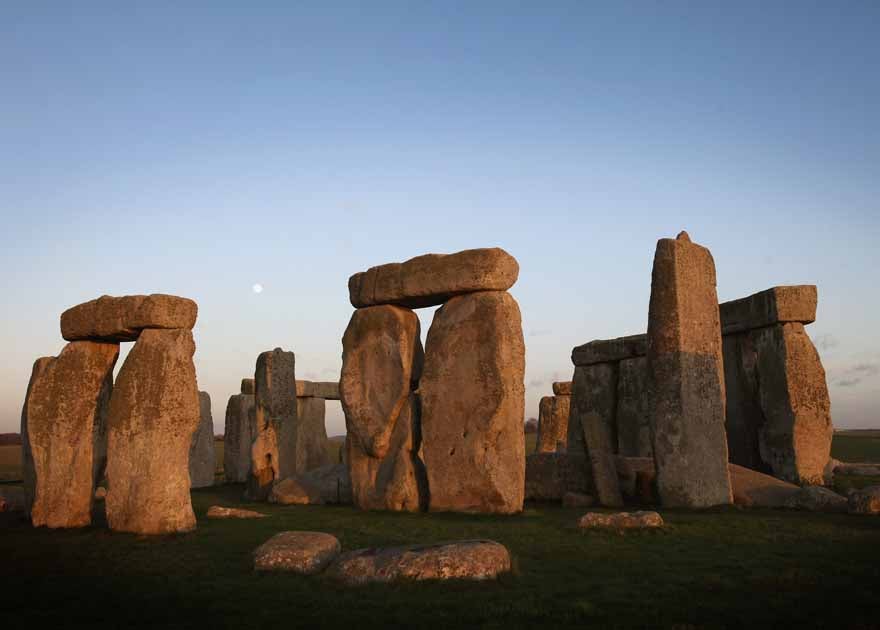Is Stonehenge worth £51m? Doing the maths on the famous stone circle

Your support helps us to tell the story
From reproductive rights to climate change to Big Tech, The Independent is on the ground when the story is developing. Whether it's investigating the financials of Elon Musk's pro-Trump PAC or producing our latest documentary, 'The A Word', which shines a light on the American women fighting for reproductive rights, we know how important it is to parse out the facts from the messaging.
At such a critical moment in US history, we need reporters on the ground. Your donation allows us to keep sending journalists to speak to both sides of the story.
The Independent is trusted by Americans across the entire political spectrum. And unlike many other quality news outlets, we choose not to lock Americans out of our reporting and analysis with paywalls. We believe quality journalism should be available to everyone, paid for by those who can afford it.
Your support makes all the difference.Here’s a novel suggestion for how the government can help reduce the massive public deficit: sell Stonehenge. A survey of 500 estate agents, among other monuments studied, has placed the price of the ancient stone circle at a cool £51 million. It’s a drop in the ocean of the £156 billion gap between government income and expenditure. But it’s a start.
Okay, so we’re not really advocating putting one of Britain’s most prized historic monuments up for sale: UNESCO would have some angry words to say about that. And it doesn’t even bare thinking how the druids will react. But the survey does shed light on just how much heritage sites are worth. Elsewhere, a price tag of £5.2 million was placed on 10 Downing Street, while Windsor Castle’s value was reckoned at £391 million.
But are the sums on Stonehenge correct? Shouldn’t such an internationally-renowned, popular and iconic monument be worth so much more?
In recent years Christie’s auction house has sold the likes of the Egyptian statue of Ka-Nefer and his family for a tidy £1.9 million, the Canford Assyrian relief for the princely sum of £7.7 million, and the Jenkins Venus for a whopping £7.9 million.
Counting just the 18 large standing stones, the 10 giant stones of the inner circle and the central altar stone at Stonehenge, by a very unscientific breakdown, that £51 million price tag on the Neolithic monument gives its 29 key constituent parts an approximate value of just £1.7 million a piece. That’s lower than each of the Christie’s sales listed above.
Theoretically speaking, don’t these figures at least suggest the total price tag should be a bit higher? Surely a super-wealthy antiquities collector would be prepared to pay megabucks to have a Stonehenge megalith in their living room? Or possibly even a trilith framing their front door?
And what about admission fees? Stonehenge presently attracts around 900,000 visitors a year, at an average price of about £5 per head. Multiply that long-term – by 25 years, say – and that means the monument is worth over £112 million. Consider too that visitor figures will most likely increase in years to come, and factor in revenue from merchandising, and £51 million begins to sound like a snip.
“It’s quite a challenge for estate agents more used to valuing suburban semis to put an accurate valuation on a royal castle or ancient monument,” commented Nigel Lewis, a property analyst at FindaProperty.com, who ran the survey. “But there was a surprising amount of agreement between the different agents we spoke to.”
Clearly estate agents have done their sums, too. They consider many different factors when it comes to judging the value of a property – location, age, whether it’s in need of improvement and so on. Stonehenge doesn’t lack for a good spot, situated on sheep-nibbled rolling Wiltshire countryside. But at 4,500 years vintage it could hardly be described as a new build, while its state of repair is questionable to say the least. And then there’s that ugly car park plonked right across the road since the 1960s (although it’s soon to be removed).
Also, unless Stonehenge’s new owners were to scrap already scaled-down plans for a new visitor centre – current cost £25 million – then that’s a big chunk of change they’ll need to lay out straight after being handed the keys to the front gate. But £51 million still sounds like far too low an asking price.
Someone buying a historic British monument isn’t actually as ridiculous as it sounds. Missourian businessman Robert P. McCulloch in 1968 purchased the old 19th century London Bridge designed by engineer John Rennie (or at least its stone cladding) from the City of London for $2 million dollars. He then shipped it to the United States, where it was rebuilt across Lake Havasu in Arizona as the gateway to a mock-English community. Legend has it that McCulloch mistakenly believed he was actually buying Tower Bridge – a story he vehemently denied.
It’d be a tragedy to see Stonehenge similarly packed-up and shipped off elsewhere. But Number 10 or Windsor Castle? Times are tight, after all.
Video: Spring Equinox Celebrations and Druids at Stonehenge
Digs, Discovery and Disaster: A History of Archaeology at Stonehenge
How to Celebrate the Summer Solstice 2010 at Stonehenge
Summer Solstice at the Stones – Photo by Ann W
Join our commenting forum
Join thought-provoking conversations, follow other Independent readers and see their replies
Comments